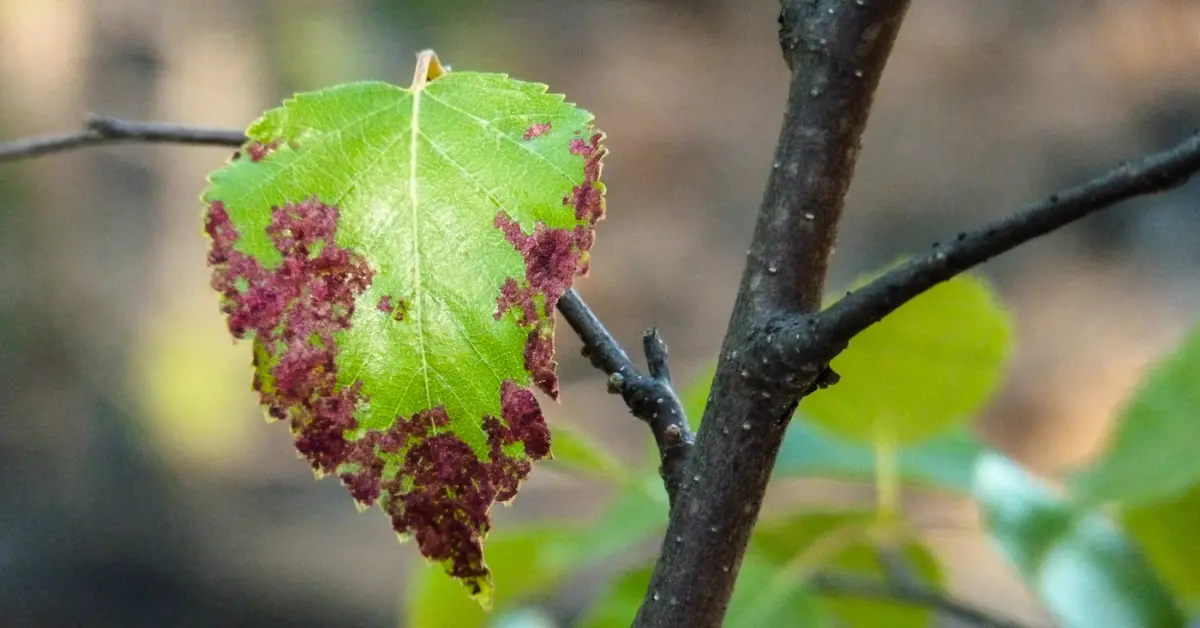At Purple Care, we’ll do everything we can to make sure your property’s trees remain healthy and beautiful. From planting and fertilization to trimming and pruning, our team offers the services and products needed to keep the trees that are a part of your lawn and landscaping looking the way you want them to for years to come. However, there comes a time where a tree may be unsalvageable, and you need to have it removed. If you have ever asked, “Is my tree dying?”, keep reading for what you need to know, and remember to call our experts at Purple Care for all your tree care needs
The Top 5 Signs of a Dead or Dying Tree
- Lack of Leaves: Plenty of trees lose their leaves every year, but if your tree starts shedding its leaves before fall has even arrived, you may have a problem on your hands. Also, if you live in a climate where the trees shed their leaves every winter, you should look for the tree buds on the ends of the branches during this season. If they do not appear, your tree could be dead. And finally, if your tree is ever showing brown leaves or needles in the middle of summer, it is likely dead or dying.
- Dying Branches: While people often consider the leaves when assessing the condition of a tree, they don’t always properly assess the branches. However, when branches clearly seem to be dying from the tips, there is a good chance the whole tree is on its way out. This is especially true if the dying branches cover a large section of the tree canopy. It is important to remember that a single dead branch does not mean the whole tree is dying. In fact, large trees will experience many dead branches throughout their life cycle, and you can improve the health of your tree by just trimming off these branches. When you’ve got a problem on your hands are the times where your tree has multiple branches that are dying at once. You can test the condition of your tree branches by seeing if a twig is healthy and bends easily, or unhealthy and quick to break. You can also test a small section of the bark, scratching it to see if it is green and healthy underneath. And speaking of bark…
- Peeling or Rotting Bark: If large sections of bark are peeling off the trunk of your tree, you may have a big problem on your hands. Some tree types do this naturally, so it is important to see if this is a trait of the species or an abnormality. Even more problematic are large sections of tree rot, particularly if that rot goes all the way around the trunk. Speaking of which, one fun fact about tree health is that a hollow tree trunk does not automatically mean a tree is dying. A tree can actually survive with a hollow center, especially if the rest of it is in good condition.
- Problems at the Roots: There are several issues at the roots that can indicate a tree is dying, but the first thing to look for is mushroom growth. While there are places in the woods where fungi are supposed to grow, mushrooms on certain tree roots can be a sign of root rot. It is also not a good sign if the roots are lifting out of the ground. This is different than roots on the surface of the tree; we’re talking about roots that look as if they are literally trying to separate from the tree itself. Again, these issues may not always indicate that your tree is dying, but keep an eye on the base of your tree when taking care of it, as root health is extremely important to your tree’s larger well-being.
- Outside Damage: Ultimately, the final thing that tends to impact the health of trees is not internal problems, but damage from outside sources. For instance, if you have recently been doing construction on your property, it is important to watch out for tree roots that can accidentally get dug up in the process. Trenches for high-speed internet can also destabilize trees and affect their roots. In general, look for changes in your trees’ appearance following construction projects at your home or business. One final tip—not all dead trees need to be removed. Some dead trees can provide shelter for animals and offer other benefits to the surrounding ecosystem. If a tree poses an active threat to your property, as in it could fall over and hurt someone/damage a building, or it could potentially spread disease to surrounding vegetation, that’s when it is time to have it removed.
For more information on tree removal or to schedule service with Purple Care today, just call (817) 880-6052 or send us a message online.




Comments (0)
Thanks for your comment!
Thanks for your feedback! Your comments have been successfully submitted! Please note, all comments require admin approval prior to display.
Error submitting comment!
There is a problem with your comment, please see below and try again.